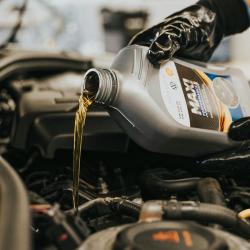The Importance of Wearing Seatbelts: Myths vs. Facts
In the realm of road safety, few innovations have proven as life-saving as the seatbelt. Since their invention over six decades ago, seatbelts have become a staple of vehicle safety, credited with saving hundreds of thousands of lives worldwide. However, despite their track record, a myriad of myths continues to surround the practice of buckling up. This article aims to debunk these myths and present the facts, reinforcing the importance of wearing seatbelts for every journey.
Myth 1: "I Don't Need a Seatbelt for Short Trips."
Fact: Accidents Can Happen Anywhere
A common misconception is that seatbelts are unnecessary for short trips or when driving at low speeds. The reality, however, is that most accidents happen close to home. Statistics from the National Highway Traffic Safety Administration (NHTSA) reveal that a significant percentage of car accidents occur within a 25-mile radius of home and at speeds less than 40 mph. This fact underscores the unpredictable nature of road travel; thus, regardless of distance or speed, seatbelts remain crucial in protecting occupants from sudden impacts.
Myth 2: "I'm a Good Driver, So I Don't Need to Wear a Seatbelt."
Fact: You Can't Control Other Drivers
Confidence in one's driving skills is admirable, but it's crucial to remember that road safety depends on various factors beyond one's control. No matter how skilled a driver might be, they cannot predict the actions of others. A split-second decision by another road user can result in an accident, making seatbelts an essential line of defense against unforeseen circumstances.
Myth 3: "I'm Safer Without a Seatbelt in Case of a Fire or Water Accident."
Fact: Seatbelts Can Prevent Unconsciousness and Provide Control
The fear of being trapped by a seatbelt in a fire or underwater is a persistent myth. However, these scenarios are rare, and the benefits of wearing a seatbelt far outweigh the perceived risks. In reality, seatbelts help prevent occupants from being incapacitated during a crash, providing better odds of escaping such emergencies. Moreover, being securely fastened can give drivers more control over their vehicle, potentially preventing accidents altogether.
Myth 4: "Seatbelts Are Uncomfortable."
Fact: New Designs Focus on Comfort and Safety
Some individuals resist wearing seatbelts because of discomfort. However, vehicle manufacturers continuously refine seatbelt designs to enhance both safety and comfort. Modern seatbelts offer adjustable features and padding to ensure a better fit for all body types. It's essential to remember that while discomfort may require some adjustment, it is a small price to pay for the significant safety benefits seatbelts provide.
Myth 5: "Airbags Will Protect Me, So I Don't Need a Seatbelt."
Fact: Airbags Are Designed to Work with Seatbelts
Airbags are a fantastic safety feature, but they are not a replacement for seatbelts. Instead, they are designed to supplement seatbelts, working in tandem to provide comprehensive protection. Without a seatbelt, an airbag alone may not prevent serious injury; in fact, it can sometimes cause harm if occupants are not properly restrained. The combination of seatbelts and airbags drastically reduces the risk of injury and increases survival rates in crashes.
Conclusion
Seatbelts are one of the simplest yet most effective safety measures available to drivers and passengers. The myths surrounding seatbelt use often stem from misunderstandings that are easily dispelled by the facts. By choosing to wear a seatbelt, individuals not only protect themselves but also contribute to a broader culture of safety on the roads. Next time you get into a vehicle, remember: clicking that seatbelt is a small step that makes a big difference.






















